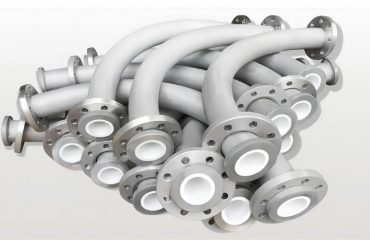body {
font-family: sans-serif;
line-height: 1.6;
}
h1, h2, h3 {
color: #333;
}
img {
max-width: 100%;
height: auto;
display: block;
margin: 20px auto;
}
Ultrasonic testing (UT) has emerged as a cornerstone of non-destructive testing (NDT) in the steel industry. Its ability to detect internal flaws in steel components with remarkable accuracy makes it indispensable for ensuring structural integrity and safety. This comprehensive guide will explore the intricacies of ultrasonic testing in steel inspection, covering its fundamental principles, diverse applications, advantages, limitations, and future prospects.
Understanding the Principles of Ultrasonic Testing
Ultrasonic testing leverages high-frequency sound waves (typically above 20 kHz, inaudible to the human ear) to examine the internal structure of materials. A transducer, acting as both a transmitter and receiver, emits ultrasonic pulses into the steel. These pulses travel through the material, reflecting off interfaces such as material boundaries, inclusions, or flaws. The time it takes for these echoes to return to the transducer, along with their amplitude, provides crucial information about the location, size, and nature of any detected defects. The technique relies on the principle of acoustic impedance – the resistance a material offers to the passage of sound waves. Differences in acoustic impedance between the material and a flaw cause reflections.
Common Applications of Ultrasonic Testing in Steel Inspection
The versatility of UT makes it applicable to a wide range of steel inspection scenarios. Some common applications include:
- Weld Inspection: Detecting cracks, porosity, lack of fusion, and other weld defects is critical for ensuring the structural integrity of welded joints. UT is highly effective in identifying these flaws, even those located deep within the weld.
- Casting Inspection: Identifying shrinkage cavities, gas porosity, and inclusions in steel castings is crucial for ensuring quality and preventing failures. UT excels at detecting these internal defects.
- Plate and Sheet Inspection: Detecting laminations, cracks, and other defects in steel plates and sheets is essential for applications demanding high structural integrity. UT allows for efficient and accurate inspection of large areas.
- Thickness Measurement: UT can accurately measure the thickness of steel components, which is vital for monitoring corrosion, erosion, and wear in various applications.
- Rail Inspection: Detecting internal flaws in railway tracks is crucial for safety. UT systems are employed in specialized railcars to inspect tracks for cracks and other defects while in operation.
Advantages of Ultrasonic Testing over Other NDT Methods
Compared to other NDT methods like radiographic testing (RT) or magnetic particle inspection (MPI), UT offers several distinct advantages:
- High Sensitivity: UT can detect very small flaws, even those deep within the material.
- Excellent Depth Penetration: UT can inspect thick steel components effectively.
- Portability: Portable UT equipment allows for on-site inspection.
- Real-time Results: UT provides immediate feedback, allowing for rapid assessment of material integrity.
- Versatility: UT can be adapted to inspect various shapes and sizes of steel components.
Limitations of Ultrasonic Testing in Steel Inspection
Despite its numerous advantages, UT does have some limitations:
- Surface Preparation: Proper surface preparation is often required to ensure good acoustic coupling between the transducer and the steel.
- Operator Skill: Skilled and experienced operators are needed to interpret the results accurately.
- Material Attenuation: High attenuation in some materials can limit the depth of penetration.
- Complex Geometries: Inspecting components with complex geometries can be challenging.
- Cost: The initial investment in UT equipment can be significant.
Future Trends in Ultrasonic Testing for Steel Inspection
The field of ultrasonic testing is constantly evolving. Several trends are shaping its future in steel inspection:
- Phased Array Technology: Phased array UT uses multiple transducer elements to electronically steer and focus the ultrasonic beam, enabling faster inspection and improved defect characterization.
- Automated Inspection Systems: Automated UT systems are being developed to enhance efficiency and reduce human error in large-scale inspections.
- Advanced Data Analysis: Sophisticated algorithms and machine learning techniques are being used to analyze UT data more effectively, improving defect detection and classification.
- Integration with Other NDT Methods: Combining UT with other NDT methods, such as radiography or magnetic particle inspection, can provide a more comprehensive assessment of material integrity.
- Improved Transducer Technology: Developments in transducer technology are leading to improved sensitivity, resolution, and durability.
In conclusion, ultrasonic testing plays a vital role in ensuring the quality and safety of steel structures. Its continued development and integration with advanced technologies will further enhance its capabilities and solidify its position as an indispensable tool in the steel industry.
Tags: Ultrasonic Testing, Steel Inspection, NDT, Non-Destructive Testing, Flaw Detection




